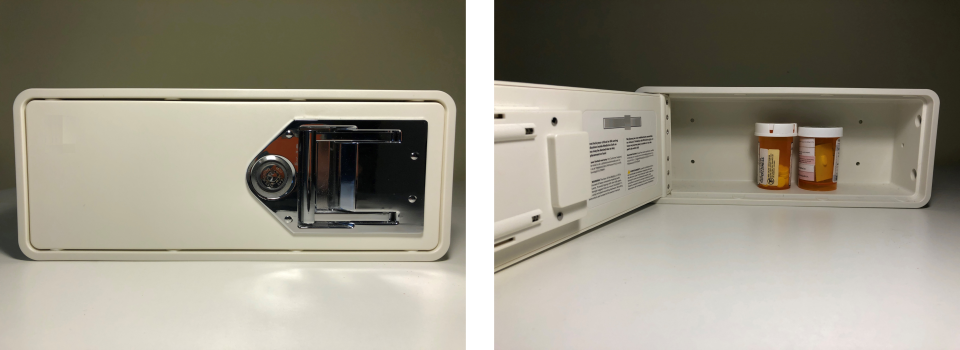Safe Storage of Medicines in the Home
On this page:
- Why Safe Storage is Important
- Storage is Necessary at All Times
- Take-back Programs Facilitate More Protective Disposal
Why Safe Storage is Important
According to a 2022 University of Michigan report (pdf)(1 MB), almost every American has prescription or over-the-counter medications in their home. To prevent accidental poisonings and reduce medicines getting into the environment, EPA urges you to:
- Safely store medicines while they are in your home.
- Use drug take-back programs to dispose of unneeded household medicines.
According to the U.S. Center for Disease Control, in 2019, 153 million opioid prescriptions were written in the U.S. While that is greatly reduced from the 2012 peak of 255 million opioid prescriptions, that is still equivalent to an opioid prescription for 46.7% of all Americans. In 5% of U.S. counties, enough opioid prescriptions were dispensed for every person to have one.
While not recommended, many people (32.4 - 91%) choose to keep their leftover opioid prescriptions rather than dispose of them (refer to Appendix D of this 2017 article). Whether the medications are for current use or being saved for future use, prescription opioids are present in a large percentage of U.S. households.
These data only account for opioid prescriptions, which are a small fraction of the total number of prescriptions filled each year. Statista estimates that more than four billion retail prescriptions are filled annually in the U.S. When considering all prescriptions, the data show a similar pattern. Again, while it is not a recommended practice, a 2019 survey (pdf)(507 KB) showed that 37% of people kept their leftover prescriptions for future use.
Safe Storage is Necessary at ALL TIMES
Safe Storage of Medicines in the Home
Given that so many households have medications, it is critical that households have safe in-home storage methods that will prevent unwanted access to medicines. It is especially important to prevent unwanted access to medicines that pose a serious risk in low doses.
To prevent unwanted access to household medicines, we recommend that households store medicines in a locked cabinet, closet, or safe. Medicine safes are available for purchase and use in the home, but any type of robust locking compartment would serve the intended purpose of limiting access, not just a dedicated medicine safe. Medicines can also be safely stored in locked fire boxes, gun safes, or any other device that is designed to limit access and resist tampering.

Take-back Programs Facilitate More Protective Disposal
EPA recommends that households use drug take-back options whenever they are available to dispose of unwanted household medications. Pharmaceutical waste managed through take-back programs is incinerated at permitted facilities with strict emission controls, removing the threat of pharmaceuticals entering groundwater and surface water. Read our What to do with Unwanted Household Medicines webpage for detailed information about drug take-backs.
